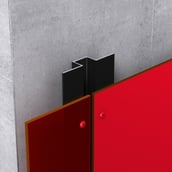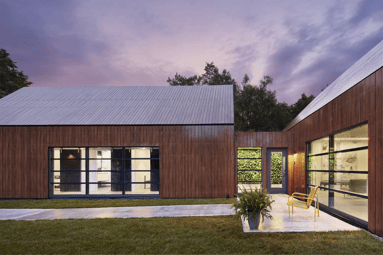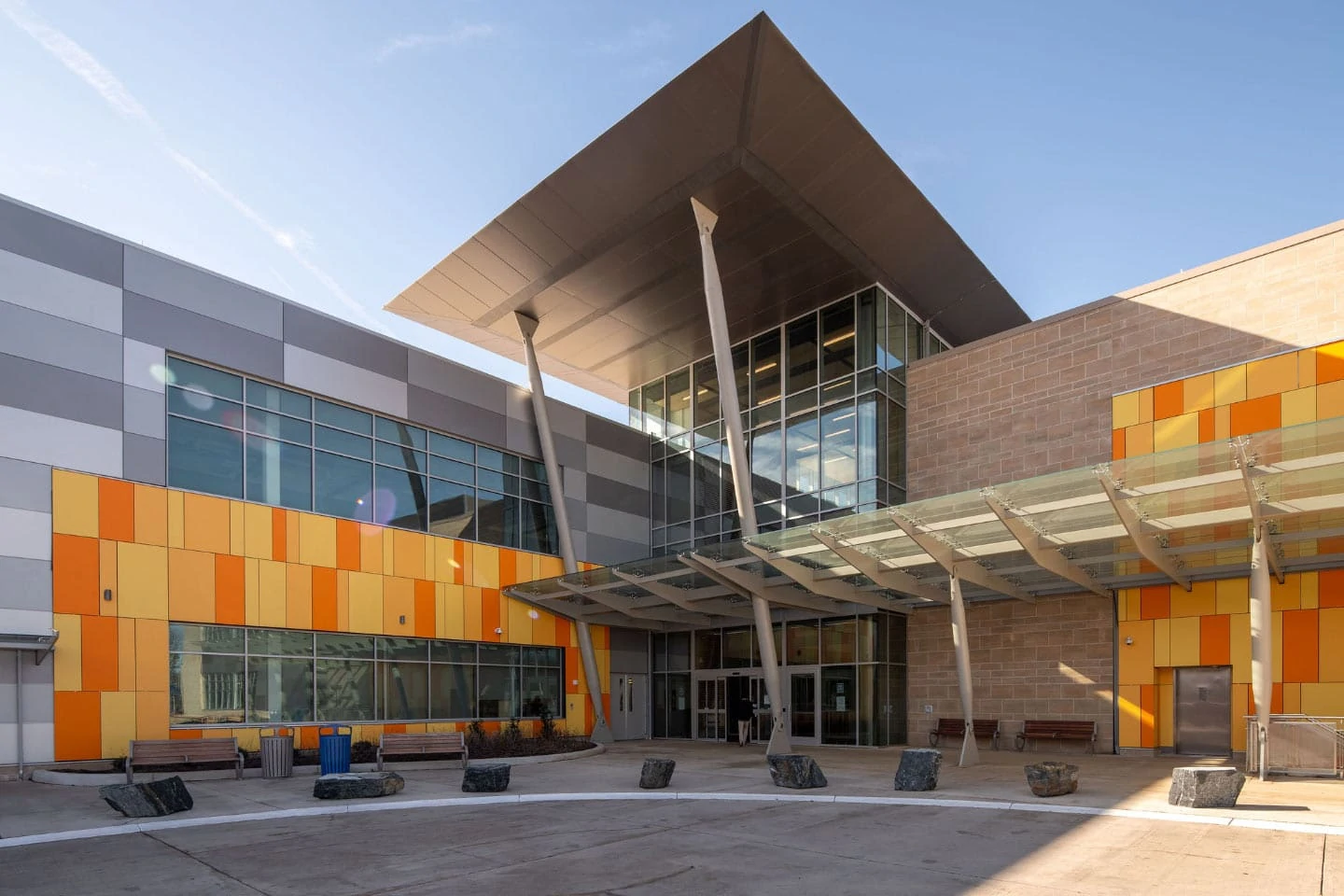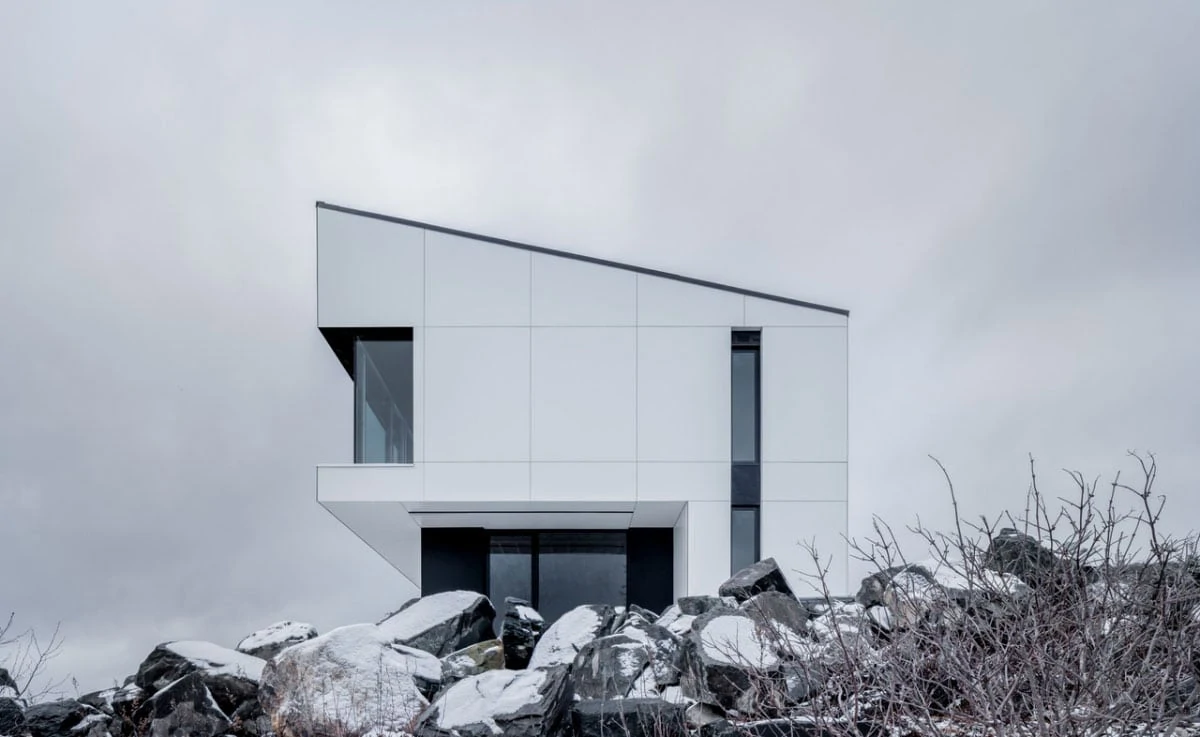-1.png)
Six Benefits of Rainscreen Cladding Façades
Modified June 6, 2025
Rainscreen façades have been around for decades, but advancements in sustainability, energy-efficiency, and design flexibility have propelled their popularity to new heights.
While already widely seen throughout Europe and Canada, American designers and builders are now reaping the benefit of modern rainscreen developments. As a globally trusted, sustainable brand, Fundermax has been around for over 130 years and remains on the front lines of these exciting developments.
What Are Rainscreen Cladding Façades?
A rainscreen system includes multiple components that work together to primarily prevent moisture infiltration. Historically, a rainscreen façade referred to just the outer wall covering, but today a reference to rainscreens includes the entire system: the outer façade and the components behind it.
In addition to moisture prevention, rainscreen systems also serve to manage or control exposure to
-
ultraviolet radiation
-
negative wind pressures
-
heat transfer into and out of the building
-
air infiltration
-
vapor transmission
As the design and construction industries have become increasingly focused on versatility and sustainability, the distinct advantages of rainscreen cladding technology have resulted in a steady rise in popularity across both commercial and residential projects worldwide.
How Does a Rainscreen Façade Work?
Multiple components or layers work together in a rainscreen façade, separating the outer cladding from a supporting wall to prevent moisture infiltration.
Supporting Wall
The supporting wall may be constructed of concrete, brick, wood, or another durable material. It carries the weight of the cladding while ensuring the stability of the building.
Weather Resistant and Thermal Layers
A thermal layer along with air and moisture barriers are installed on the outside of the supporting wall. The type and thickness of the rainscreen insulation layer is determined by the project details and the material’s insulating capacity.
Ventilation/Drainage Cavity
The open air cavity is the hallmark feature of the rainscreen façade system. Open on the top and bottom, this cavity promotes water drainage, and the constant circulation of air allows water vapor to escape and evaporate.
Cladding Substructure
Depending on the exterior façade material to be used, architects have several options for substructure materials, including wood, steel (with galvanized coating), and aluminum. This substructure is what allows space for the open air cavity behind the exterior façade cladding.
Exterior Cladding
Exterior cladding panels are affixed to the substructure, completing the rainscreen façade system. Choosing a durable, high-quality cladding material is critical to ensure an effective and efficient rainscreen façade. Numerous cladding materials are available including wood and metal, but phenolic panels stand out for their durability, low maintenance, and aesthetic appeal.

Fastening Options for Rainscreen Façades
Rainscreen façades must meet the needs of each distinctive building and project; that means different projects will benefit from different fastening systems.

Exposed Fastener System
By utilizing Max Compact Exterior façade panels and color-matched screws or rivets, an exposed fastener system can offer maximum design freedom at an economical price point.

Concealed Fastener System
By utilizing embedded anchors on the back side, phenolic façade panels can hang on horizontal rails attached to vertical wall brackets, offering maximum design flexibility without exposing fastener points.
Modulo Plank System
Modulo is a type of concealed fastener, closed joint, modern façade plank system. Utilizing a concealed clip system, the panels can be installed without any open joints vertically or horizontally.
Scaleo Lap Siding System
Another type of concealed fastener system, Scaleo is an attractive lap siding system that offers an ideal combination of ease of installation with the proven benefits of the prefabricated Max Compact Exterior façade panels.
What Are The Benefits of Rainscreen Cladding?
1. Ease of Installation
Lightweight panels and multiple fastening options make rainscreen cladding simple and easy to install.
2. Sustainability
Rainscreen cladding helps to minimize carbon dioxide emissions by reducing the demand on a building’s heating and cooling systems.
3. Maintenance
Required maintenance of rainscreen cladding is essentially zero, especially if you opt for a product like Fundermax rainscreen cladding panels which are graffiti-, impact-, and scratch-resistant.
4. Sound-Proofing
Rainscreen insulation provides not only thermal insulation but also acoustic. Significantly reducing noise pollution is an often overlooked but significant benefit of a rainscreen façade. Some insulation provides more sound-proofing than others and Rockwool mineral wool does a great job at providing energy-efficient, sound-proofing rainscreen insulation in colder climates.
5. Aesthetics
Utilizing phenolic compact panels in rainscreen systems offers countless options, including colors, textures, and fastener systems. This means unmatched freedom for your exterior design.
6. Cost-Effectiveness
Rainscreen façades built withvphenolic panels maximize building heat retention and absorb the sun’s heat, reducing your heating and cooling costs. Low-to-no maintenance means the cost of upkeep is minimal.
Examples of Rainscreen Cladding Facades

Woodgrain Façade for a Cozy House
For this Ash Street, Kansas residential project, done by the University of Kansas School of Architecture, Max Compact Exterior Panels generated energy savings while ensuring interior comfort. From a design standpoint, the woodgrain aesthetic perfectly complemented the architectural design and the surrounding environment.

Flexible Design for a Consistent Aesthetic
At the Wheaton Library & Recreation Center in Wheaton, MD, Max Compact Exterior panels brought a colorful design to life, connecting a wide variety of vertical, horizontal, and angled surfaces and openings into a seamless aesthetic.

High Design Meets High Durability
The Shift House, a residential project in Canada, required durable materials that could withstand the low temperatures in the area. The rainscreen façade with Max Compact Exterior panel cladding offered the required durability with a stunning white aesthetic.
Rainscreen Facades on the Rise
The rise in adoption of rainscreen façades in North America is an exciting development for designers, architects, and contractors. In particular, Fundermax’s trusted exterior-grade panels prevent moisture infiltration and promote thermal efficiency while simultaneously offering maximum design freedom.
From versatility to sustainability, the advantages of rainscreen cladding can add value to any project. For more information on rainscreen façades and how they can benefit your project, contact us today.

